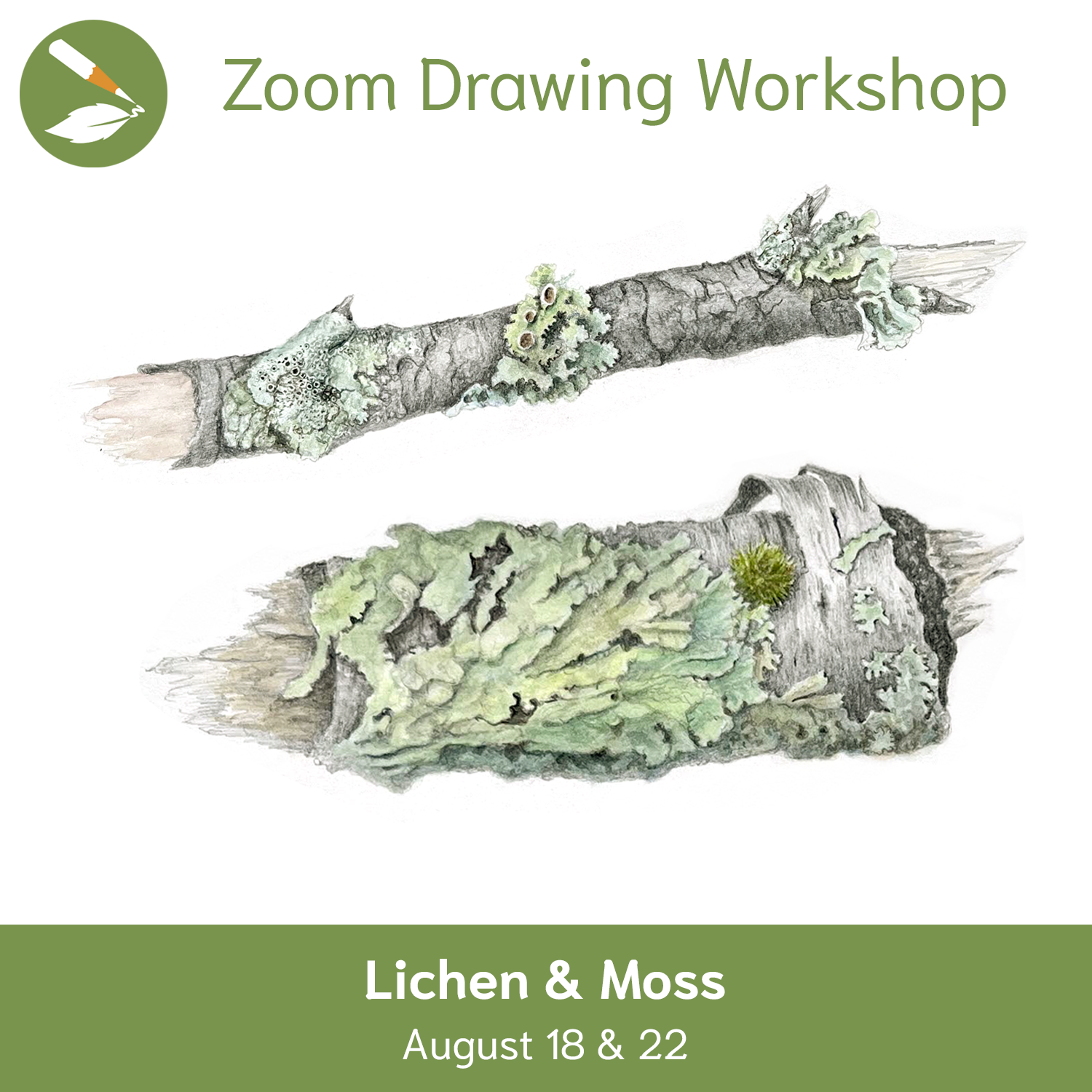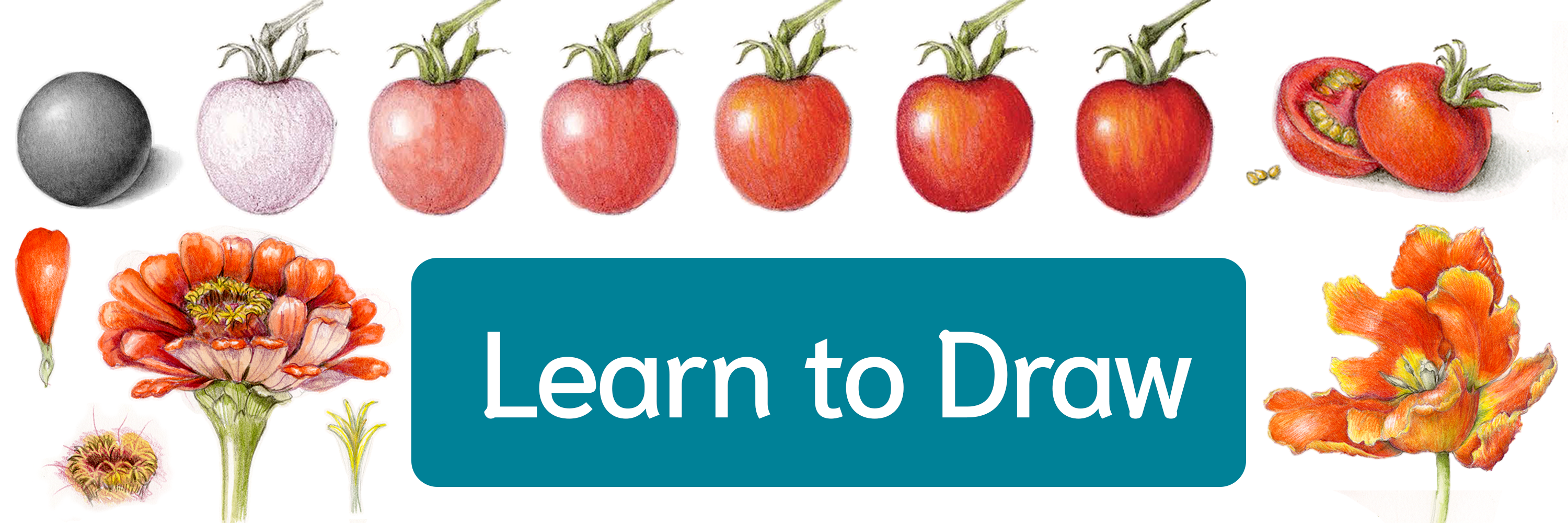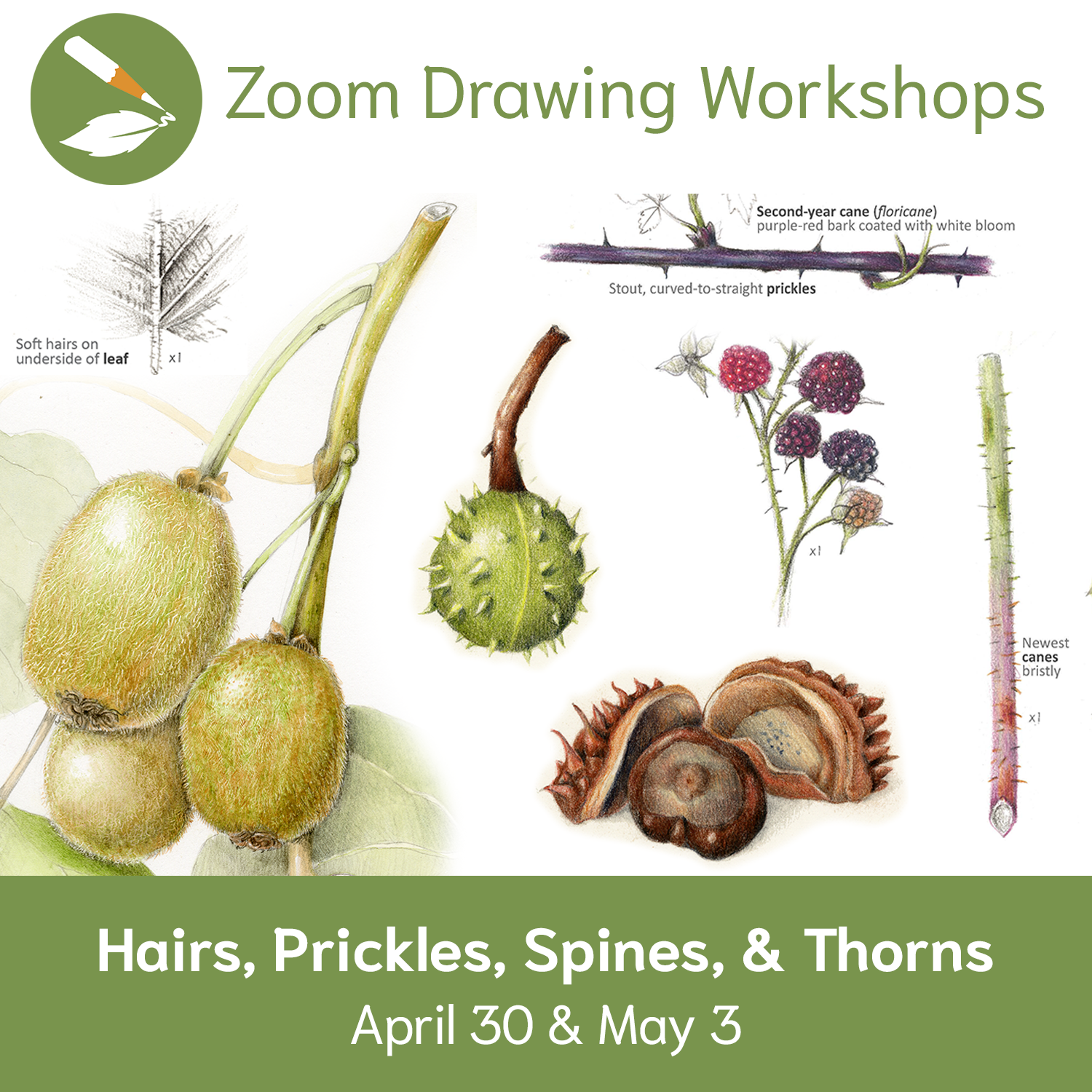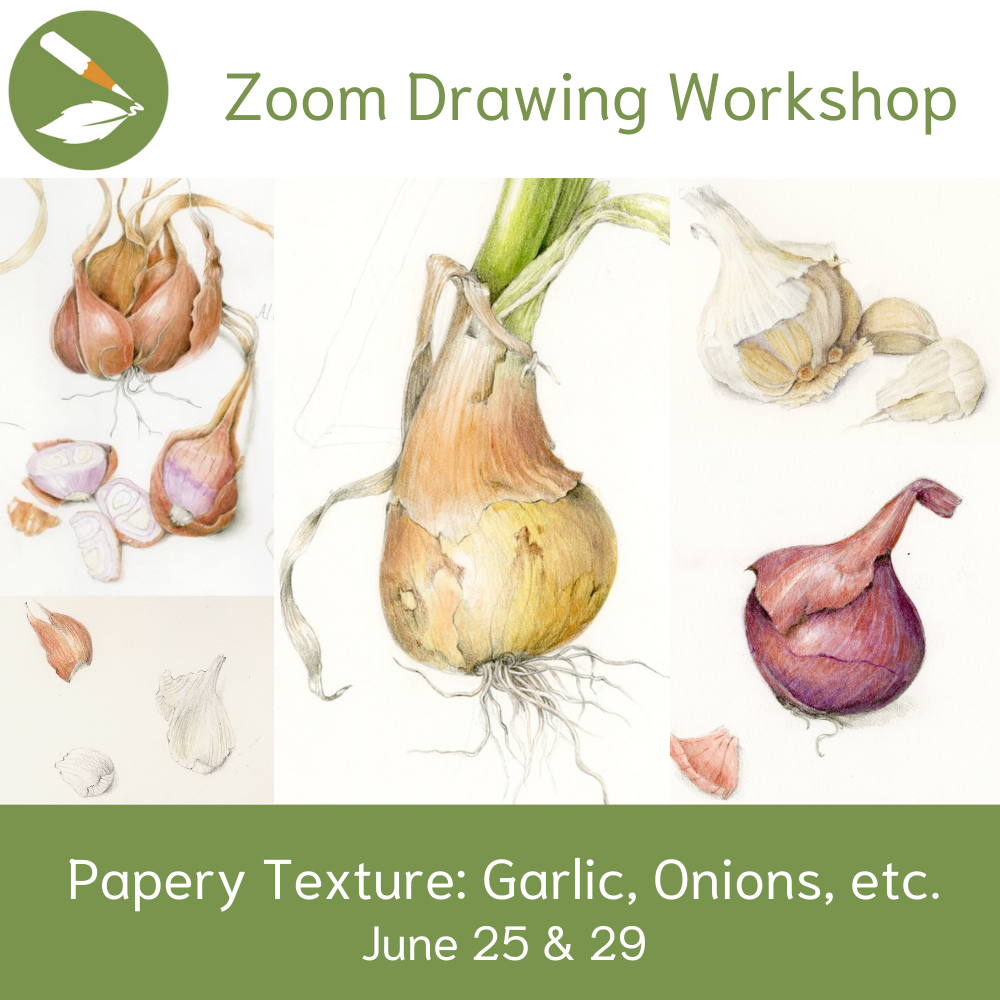Transform Your Botanical Art with Texture
Ever wonder how to make your botanical drawings leap off the page? The secret lies in texture. By infusing your forms with texture, you can transform a basic sphere into a ripe orange, a geometric cylinder into a weathered branch, and a cup shape into a delicately petaled tulip – almost like magic! Let’s dive into some premium tips for adding texture and bringing your botanical illustrations to life.
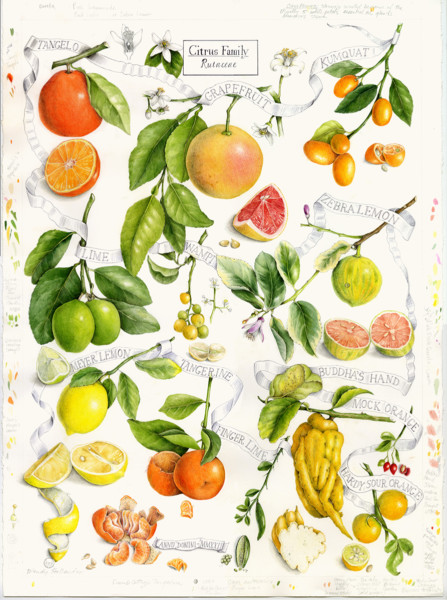
Building on the Basics
Before diving into texture techniques, ensure you have a basic draft of your subject, complete with the beginnings of your grisaille toning. This foundational work in light source and perspective sets the stage for realistic texturing. Aspiring artists, begin with basics here!
For a deep dive into texture, check out the recording of our Peels & Pulp: A Focus on Texture Zoom Drawing Workshop.
Put the “Water” in “Watermelon!”
LIVE on Zoom, July 21 & 25, 2024
With a combination of watercolor and colored pencil, you’ll learn how to achieve the many textures of watermelon – from the green pattern on its smooth outer rind, to the spongy, fibrous, juicy red melon and glossy seeds hidden inside. Summer will be over too soon, but your unique portrait of this sweet, refreshing fruit will last a lifetime! Learn more & Register for the Wonderful Watermelon Zoom Workshop Here
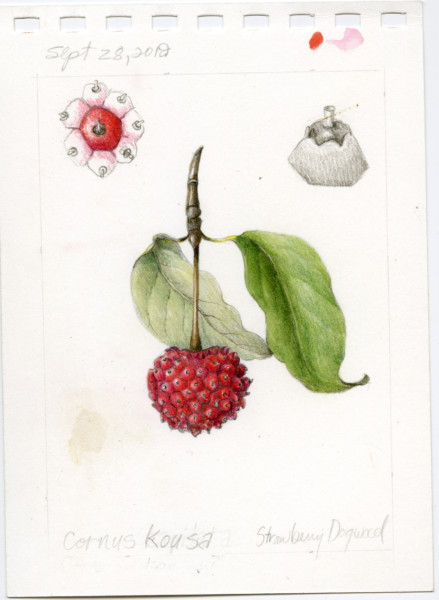
Start Small
Begin by practicing a small swatch of your texture on the side of your paper (or on scrap paper, if you prefer). This warm-up will boost your confidence and help you refine the technique before applying it to your main drawing.
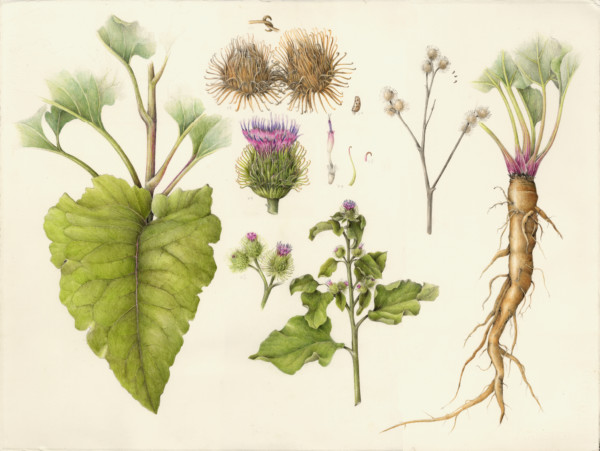
Enlarge to Emphasize
Sometimes, the details of your plant are too minute to capture in a life-size drawing. Measure your subject and multiply your measurements to enlarge it enough to show the finer details. Include a scale indicator to clarify the magnification. (ex. If you multiplied your measurements by 4, label your drawing “4x” or “x4”.)
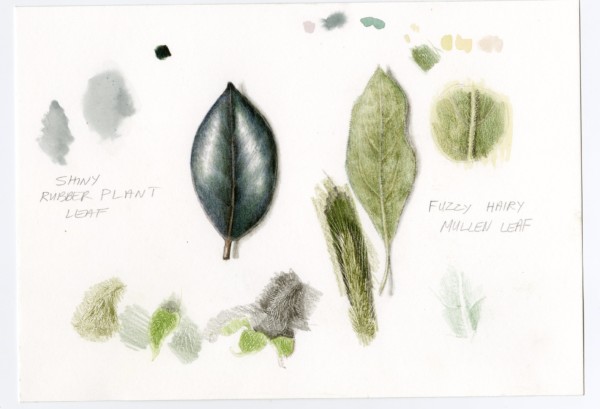
Shiny vs. Fuzzy
Understanding the difference between shiny and fuzzy surfaces is crucial for realistic rendering. Fuzzy surfaces absorb light, resulting in closer tonal values and mostly midtones. Shiny surfaces reflect more light, displaying greater contrast between the darkest and lightest values. For more insights on shiny and fuzzy leaves, check out this video.
Learn how to create realistic renderings of different leaf textures and tones with the Recording of Green Leaves: Texture and Color Zoom Workshop.
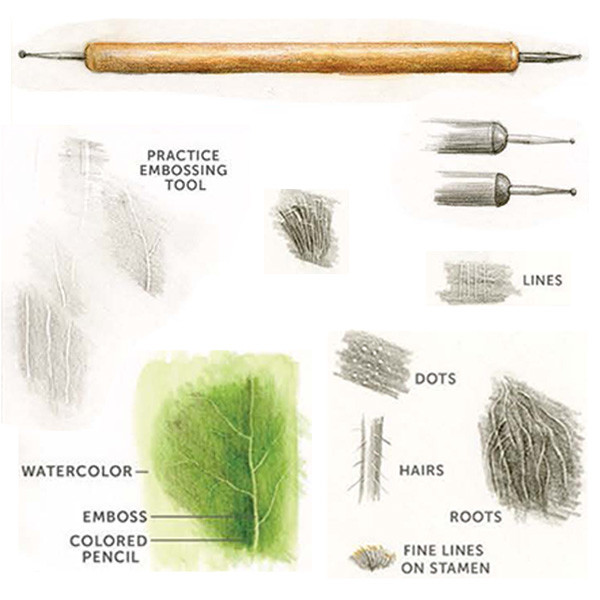
Embossing for Delicate Details
Embossing tools are used in various crafts to create a recessed or indented pattern on a surface. Press the tool into the paper’s surface. Then, when you draw over the embossed area with a colored pencil or watercolor, the embossed area stays light while the pencil tones cover the paper around the embossed area.
This technique is perfect for rendering thin roots, hairs, veins, or stamens. The trick is to mix embossing with regular drawing so that the embossing doesn’t look too obvious.
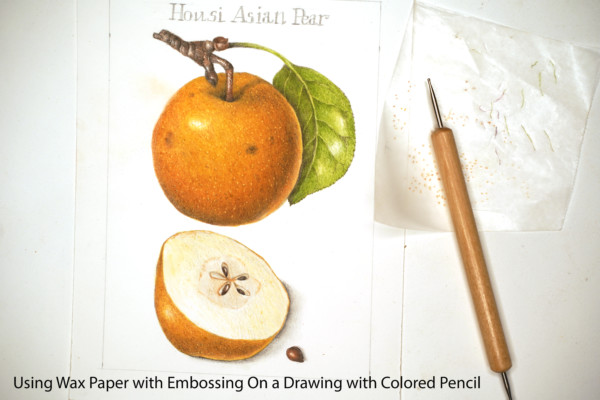
Practice keeping your embossing subtle and varied so that the lines are not stiff and regimented. Apply strong pressure at first, and then ease up on the pressure, making the line thinner and thinner until it disappears. Play around with different sizes of embossing tools for further variation.
Technique Tip: Use the embossing tool on top of wax paper (on top of your drawing) for even subtler indentations. See this FREE video for further details.

Dots for Realism
For subjects like apples, practice embossing dots. Start with a swatch. Once satisfied with your results, emboss the dots on your drawing and layer colors along the apple’s cross-contour lines.
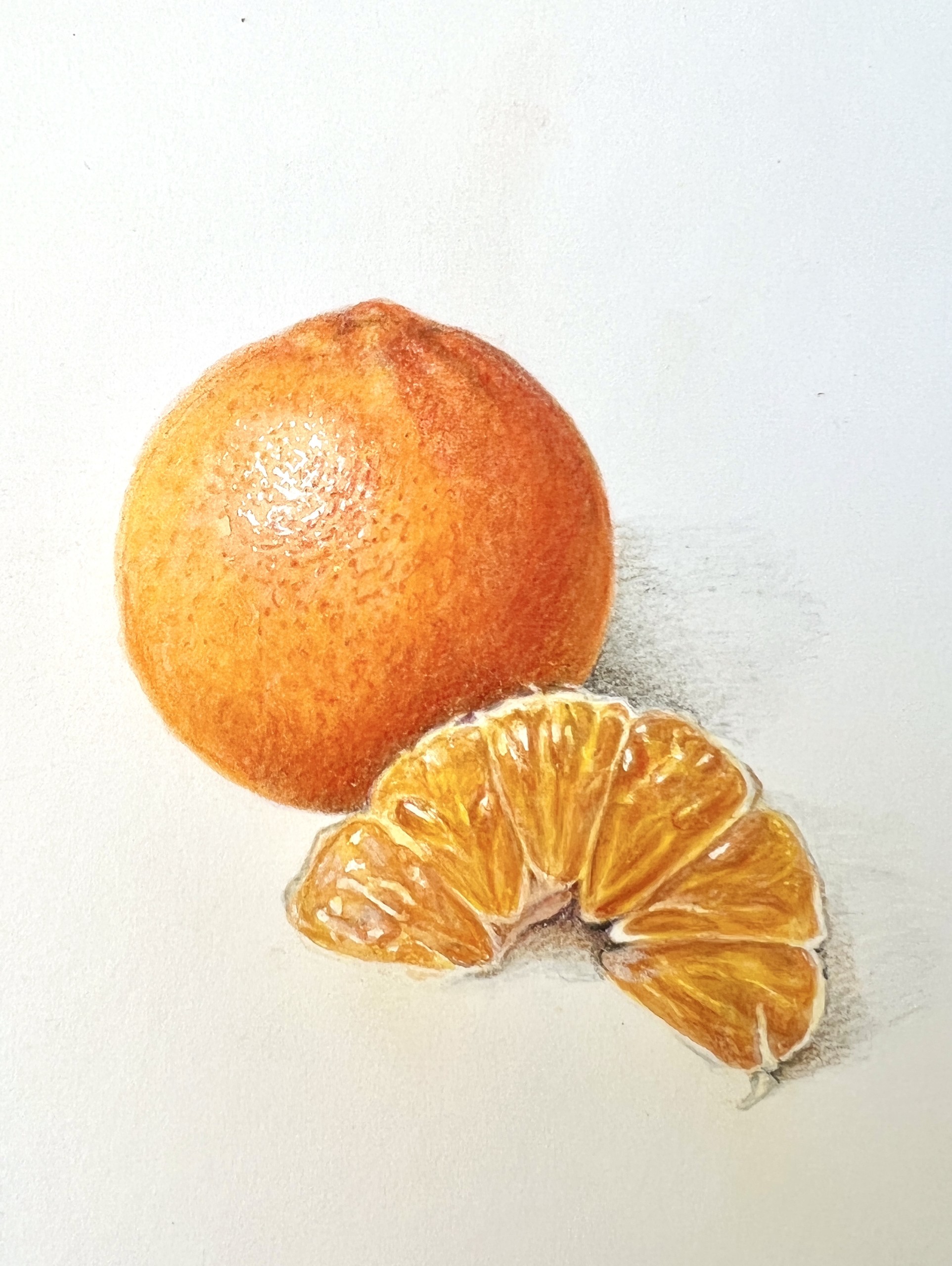
Masking Fluid
You can use masking fluid to leave areas of the paper white when using watercolor. A great way to make small marks with masking is to use an inexpensive dip-pen. This technique is explained more in the recording of our Peels & Pulp: A Focus on Texture Zoom Drawing Workshop.
“I applied masking fluid with a dip pen in the brightest highlight areas, painted with some watercolor to get some color down, and then fine-tuned with colored pencil.” – Pam Thompson

Capturing Bumps & Recessed Seeds
On aggregate fruits like strawberries, shadows play a crucial role in depicting indented seeds. Include these shadows to show each seed’s depth in the strawberry’s flesh. Check out this free lesson – 20 Steps to Stunning Strawberries – or dive deeper with this Recording of Sketching Sweetness: Strawberries Zoom Workshop.

Drawing Spikes
Spikes tend to be wider at the base and taper to a very fine, sharp point. Practice drawing some individual spikes with varied thicknesses. Drawing the spikes enlarged can help you understand and communicate their structure. (Embossing tools can really come in handy here!)
For more, check out this Recording of Hairs, Prickles, Spines, & Thorns Zoom Drawing Workshop.
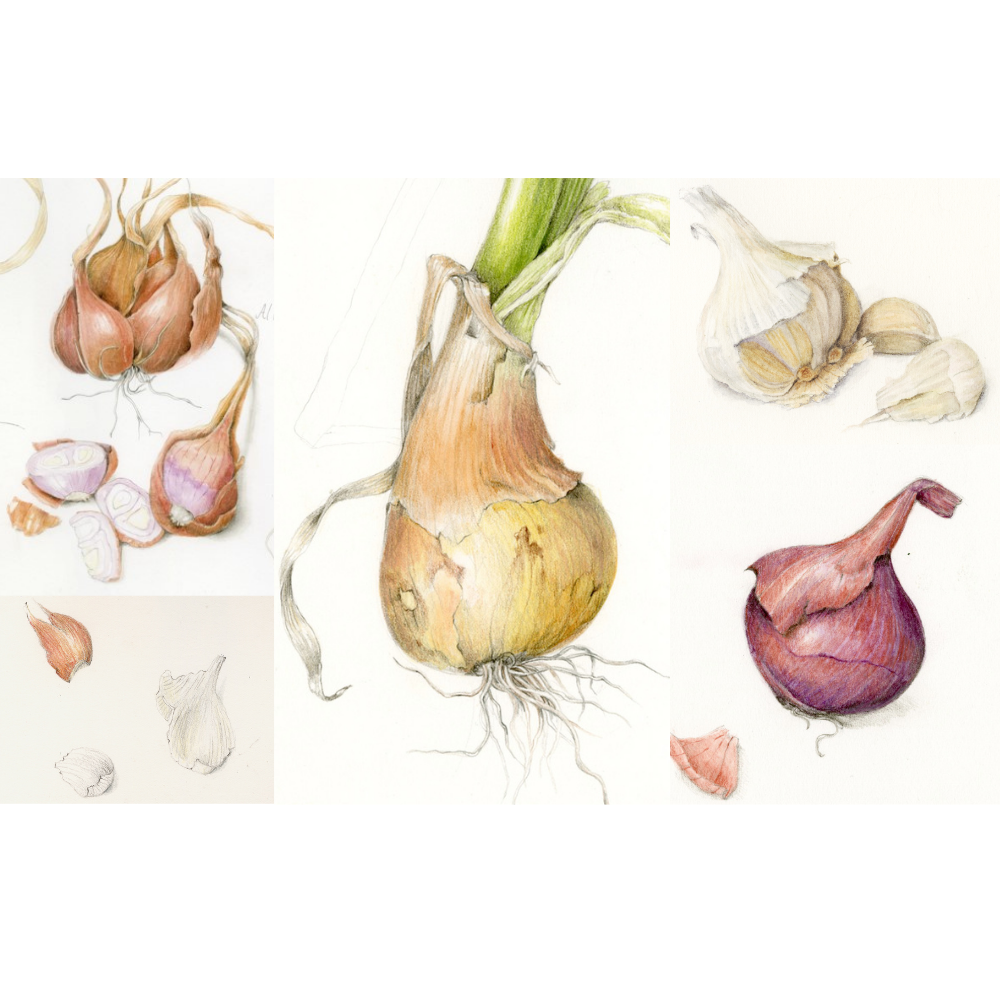
Flaky, Papery Parts
Let light shine through that papery texture, often found on our botanical subjects, like drying out bracts and flaky onion skins, For techniques to create that translucent, thin, papery “feel,” check out this Recording of Papery Texture: Garlic, Onions, etc. Zoom Workshop.
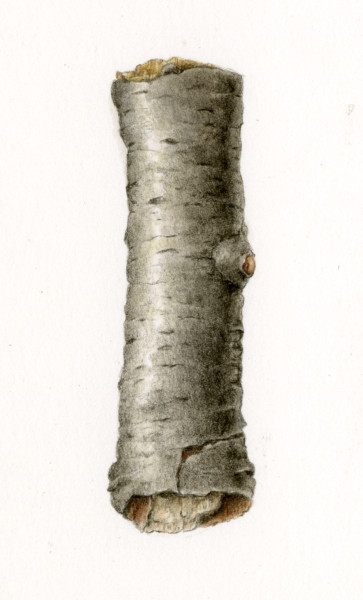
Detailing Branches
Observe the details on your branch (like lenticels, which allow the branch to breathe!), drawing them lightly at first. As you fill in closer and closer to the highlight, make sure your highlight appears irregular and not an empty stripe. I do this sometimes with small dots, dashes, or irregular zig-zaggy toning. Look to your branch for inspiration, and let nature guide you! Branches are a great introduction to botanical drawing.
We Like Lichen (and Moss!)
Workshop Starts August 18, 2024
Illustrate the fascinating patterns and intricate textures of lichens and mosses using a combination of colored pencil and watercolor. Gather some branches, bark, or rocks with these curious organisms growing on them, and let’s celebrate their quiet beauty together. Click Here to Learn More & Register for our Lichen & Moss Zoom Workshop.
Infusing texture into your botanical art transforms it from flat to fantastic. Start practicing these techniques today and watch your drawings come to life!
Dip your toe in with short lessons from Botanical Basics, or dive deeper with full-length lessons from The Practice of Botanical Drawing.
Try your FIRST WEEK FREE and cancel any time with no hidden fees!
Join our online course and get personalized feedback on your artwork in addition to hours of video lessons.

